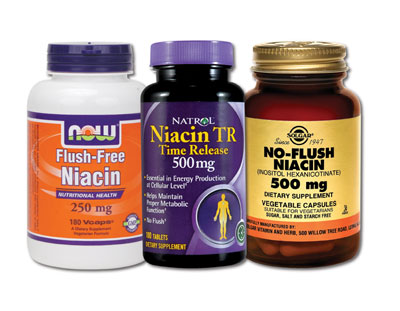Niacin, or vitamin B3, is a water-soluble vitamin. Thus when consumed, the surplus is excreted through the urine. Therefore, it can be deduced that, consuming vitamin B3 in excess, or vitamin B overdose may lead to toxicity.

Niacin Overdose and Toxicity
Because of the health benefits associated with vitamin B3, most people tend to forget that it can be overdosed leading to toxicity. Consumption of vitamin B3 in excess turns the skin reddish. This is because vitamin B3 is supposed to enhance the dilation of blood capillaries to allow sufficient blood flow. Therefore, an excess consumption will result to over dilation of the blood vessels hence rapid flow of blood. Other common symptoms of vitamin B3 overdose include feeling itchy and having an irritable skin. This especially occurs to skin areas that are in constant contact with clothes.
Vitamin B3 is vital for the conversion of carbohydrates to glucose so as to enhance energy production. This can be detrimental especially to diabetic individuals when the supplement is taken in excess. A high concentration of glucose in the body triggers production of excess insulin which in turn causes development of diabetes. In addition, an overdose of niacin leads to development of digestion complications and problems including diarrhea, cramping and vomiting just to mention but a few. Experts also believe that overdosing niacin for a long time may result to gout.
Other Common Side Effects
Niacin can be helpful in lowering cholesterol levels if taken in large doses, so it seems to be a super vitamin that we all need plenty of. However, it can have some pretty scary side effects. As in most things in life, moderation is best. In the case of niacin, moderation is imperative if you want to avoid potentially harmful side effects. Healthy adults require 14 – 16mg of niacin daily, and a balanced diet which includes a variety of foods should provide this. Niacin is present in multivitamin tablets, but a healthy, varied diet should provide all the niacin your body needs.
As mentioned, high doses of niacin (around 75mg) can cause flushing, irritation of the skin and rashes. While this may not sound too serious – after all, high cholesterol is more dangerous than hot flushes or a skin rash – it may cause discomfort and loss of confidence. Consuming niacin in high doses should be supervised by medical professionals, who can identify and interpret the signs of niacin overdose and the possible health implications.
Too much niacin can cause digestive problems such as nausea, vomiting and diarrhea, as well as excessive gas production and bloating. In the right doses, niacin is your digestive system’s friend, but you can have too much of a good thing.
Although it’s not a common side effect of niacin ingestion, some people can experience what appears to be a severe allergic reaction to niacin, involving breathing difficulties, facial and oral swelling, or severe rashes.
Other niacin side effects include lowering of blood pressure, which could result in fainting spells, blurred vision, and scaly skin resembling an episode of psoriasis. Very high doses of niacin could lead to jaundice and other liver problems. High doses while taking niacin are not fatal per se, but if there are underlying problems with the skin, digestion or liver, overdosing on niacin could exacerbate these conditions to a point where life is very uncomfortable and you require medical intervention to get things back on an even keel.
If your niacin intake comes from the food you eat, it’s unlikely you’ll take in enough to cause any of these side effects. Let your doctor decide if you need more than the recommended daily amount (RDA) of niacin, and don’t be persuaded by the claims of supplement manufacturers. That way, niacin can be your body’s friend as nature intended.

